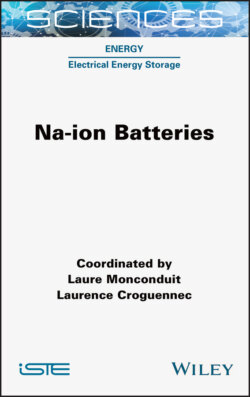Читать книгу Na-ion Batteries - Laure Monconduit - Страница 15
I.3. Future commercialization of NIBs
ОглавлениеAlthough LIBs are unquestionably the leader for electrochemical energy storage, their costs remain high and dependent on the demand that continuously and exponentially increases. In contrast, owing to the abundance of sodium, the price of NIBs could be preserved even with a large demand for energy storage. Furthermore, due to the proximity of their chemistry, the technology developed for LIBs should be promptly transferable to NIBs and easily upscaled. Widespread commercialization and mass production of NIBs will still depend to further developments, optimizations and market acceptance (Bauer et al. 2018). Chapters 7 and 8 are devoted to present the key achievements realized by NATRON and FARADION companies to develop and scale-up NIBs from the laboratory scale to the prototype level and commercialized battery stage.
NATRON develops Prussian blue-based NIBs. Chapter 7 provides a practical introduction to the use of Prussian blue and its analogues (PBA) as electrodes in NIBs. The relevant physical and electrochemical properties of PBA-based electrodes and their use in batteries are described, and their performance compared with the current commercial state-of-the-art. The open framework of PBAs allows them to get high-rate capability and a long cycle life. Capacities over 150 mAh/g at potentials above 3 V versus sodium are achieved, placing them among the highest energy density positive electrodes of NIBs. The first commercialization of products based on PBAs occurred in 2019.
FARADION has collaborated with commercial partners to produce large-scale quantities of optimized active materials, electrolytes and electrodes to be incorporated into prototype NIBs cells. The technology is based on non-aqueous electrolyte and layered nickelate positive electrode coupled to a hard carbon negative electrode. Due to the proximity of the electrodes with those used in LIBs, these NIB prototype cells can be fabricated on existing Li-ion manufacturing lines that should be cost effective. Note that 12 Ah prototype pouch NIB cells delivering a specific energy higher than 140 Wh/kg have been produced and higher specific energy are announced in the near future (Chapter 8).
The development of these very promising NIB technologies by emerging and proactive battery companies all over the world should accelerate the adoption of NIBs into many new markets and applications.
